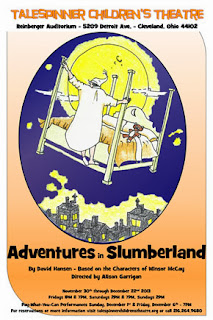In brief. two hundred years into the future (the year 2109, according to Forster, best known for novels like Howard's End, A Room With a View and Passage to India) humanity will have destroyed the surface of the planet, and created a self-exiled under the surface of the planet where every individual human lives their existence in single room where all necessities are provided by The Machine.
No one desires to come into direct contact with anyone else, all communication is conducted through The Machine. They spend all leisure time (which is to say, all non-resting or feeding time) staring into the screen, through which they communicate and receive thoughts, messages and "ideas".
To my teenage mind, this was a remarkable turn-of-the-century concept of television. I had no idea of how computers and what we would later call the Internet would occupy our potential for expression or communication, and the similarity between Forster's world and this is much more accurate than that of Wells or even Bradbury.
However, let us return to 1986. Mr. Knapp asked what contemporary event came to mind when reading this story. A recent (two weeks ago) return to my alma mater reminded me of how reticent my contemporaries are to volunteering responses. So I do not believe my memory is too inaccurate when I suggest that a fat second or two went by, no one answered, and I finally put my hand up to suggest, "Chernobyl?"
Yes, that is exactly what he was suggesting. The Chernobyl disaster occurred on April 26. (Side note, at Prom that year we were served Chicken Kiev, which made for a number of tasteless jokes.) Since that time, the threat of and benign disinterest in global climate change suggests that it will not take any specific "accident" to drive us underground.
Also, too ... in reference to our capacity for viewing as a solitary intellectual endeavor, our English teacher inquired about any or all solitary activities, and whether they were not in and of themselves, selfish activities, even if they were arguably healthful. He was and is a marathon runner. Hours and hours on the road, away from his growing children, wasn't that inherently self-involved, even if it didn't render him on of Forster's pale, formless blobs of humanity?
This was an element I made reference to in my solo performance And Then You Die (How I Ran A Marathon in 26.2 Years). Since that time I have questioned my pursuit of running and how much time it takes from my family. I have since reconciled that fact that every minute I spent exercising gives back two that may be lost to a sedentary lifestyle.
In any event, this was one of the formative works of my youth. In my 30s, I thought occasionally of adapting a play from this material. Fortunately for me, Eric Coble did it first.
Commissioned by the Hiram College Center for Literature, Medicine and the Biomedical Humanities, Eric wrote a one-act stage play, which was presented at a symposium at Hiram and later at the Ingenuity Festival in Cleveland in 2005. I missed those productions, but asked Eric if I could read it. Centering as it does on two protagonists, Vashti and her son Kuno, with a dozen or more voices coming through The Machine, I felt it would make an excellent radio drama.
Following the success of our radio version of I Hate This in late 2005, WCPN producer Dave DeOreo asked, and now, what next? I suggested The Machine Stops. Then I asked Eric.
Creating this show was a particular delight, involving as it did some of my favorite voice talents (Jazmin Corona, Tim Keo, Nick Koesters, RaSheryl McCreary, Dawn Youngs) and giving Dennis Yurich the chance to create some truly delicious themes and sound effects. In particular, the subtle, throbbing humming of The Machine was unsettling in the extreme.
Also, we employed a number of Foley effects, executed by Kelly Elliott, inspired by the works of Douglas Adams (Hitchhiker's Guide to the Galaxy) and Terry Gilliam (Brazil), among others.
Be sure to listen to the Q&A with playwright Eric Coble at the end of the broadcast. The reference to MySpace may startle you.










